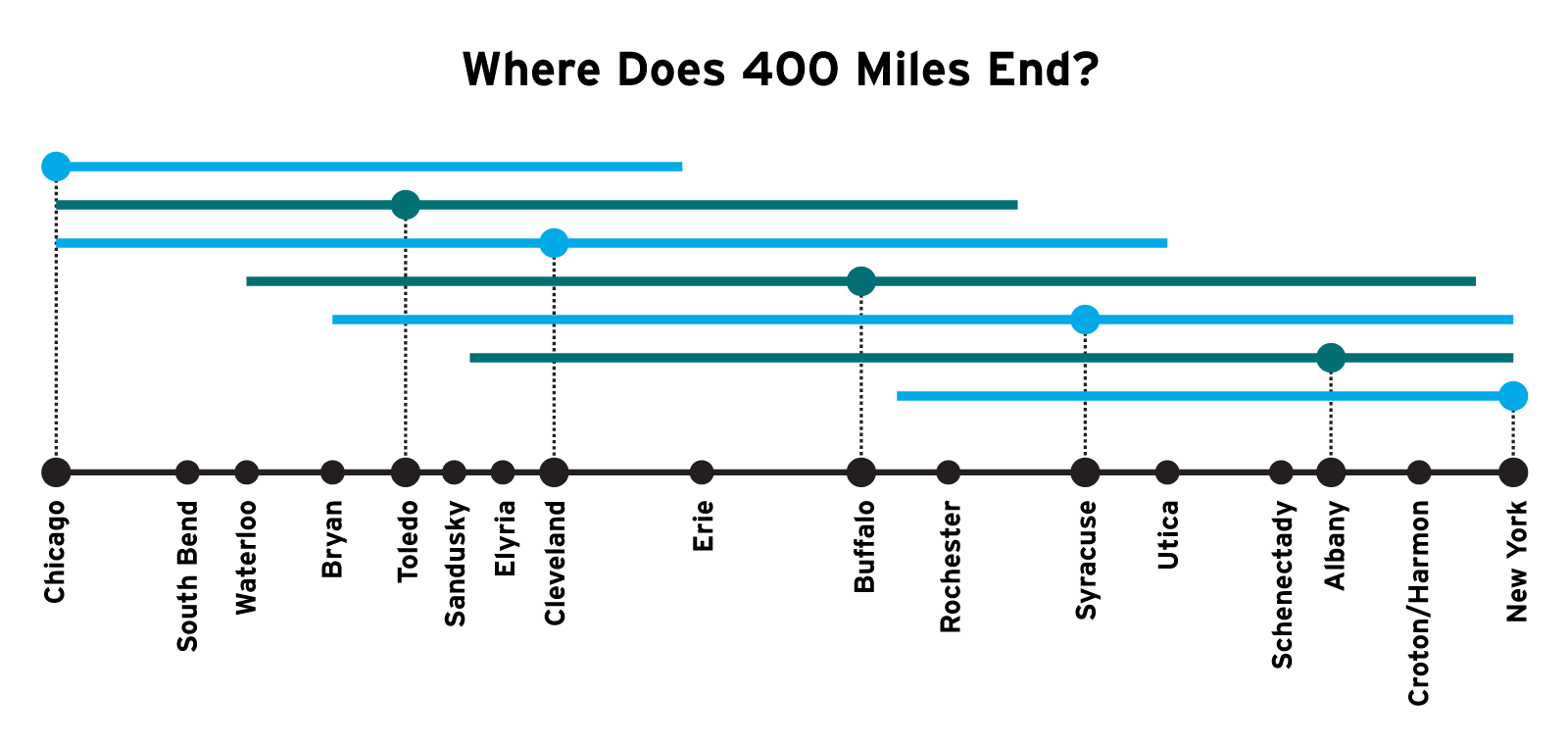Caltrain Completes Electrification Between San Francisco and San Jose Caltrain, with partners Pacific Gas and Electric Company (PG&E) and Balfour Beatty, has completed energization of the 51-mile corridor between San Francisco and San Jose. Caltrain can now begin...
The “100 – 400 Mile Sweet Spot” and the “Three-Hour Rule”
A tremendous amount of railroad promotion and planning has been conducted on the assumption that rail travel makes the most sense for trips between 100 and 400 miles long.
The lower number is based on an assumption about station access time. The thinking is that travelers would prefer to drive for a short trip, rather drive to a train station and wait for a train.
The higher number is based on what I call the “Three-Hour Rule” – an assumption that travelers will choose to fly for trips over three hours.
At first pass this seems like a compelling argument. Trains offer an excellent choice for 100 to 400 mile trips and should begin replacing planes in shorter corridors between large cities.
But trains also offer an excellent choice for many shorter trips and even very long trips. Does it make sense to ignore the large volumes of travelers (and their revenues and political support) that make trips at either end of the spectrum?
Strict adherence to the 100 – 400 mile trip concept is dangerous because
1) doesn’t describe the cost/benefit ratios of various services,
2) ignores current travel patterns and makes railroad travel irrelevant to much of the public,
3) fails to recognize the ability of strong networks to build volume and lower costs simultaneously,
4) creates an unrealistic threshold for a service launch, and
5) projects a lack of confidence in rail’s ability to compete with the automobile.
Origin of the Three Hour Rule
The three-hour rule begins with the assumption that travel time is the single most critical element underlying travel choice. An implicit assumption is that automobiles are always the preferred travel choice.
The rule assumes that rather than drive to the station and wait for the next train, travelers will just drive for trips less than 100 miles. This thinking, of course, ignores the fact that many people will choose to locate their businesses and homes near an active railroad station to make station access more convenient – even walkable.
Rail advocates and opponents alike have also argued that trains can’t compete with planes for trips over three hours. Three hours is presumed to be the threshold at which flying becomes faster than the train for downtown-to-downtown trips. (An hour access time plus an hour minimum flying time plus an hour to reach the destination equals a minimum of three hours to fly.)
French trains now cover 500 miles in three hours, but the slower speeds projected for the United States have led most rail promoters to define the prime market for rail service as less than 400 miles.
Another strong motivator behind the use of the 100 – 400 mile construct is its ready appeal on the Hill.
Congressmen and other policy makers fly more frequently than most Americans. Therefore, they relate to trains as the equivalent of airplanes, unaware that most train riders would otherwise drive.
A program designed around the 100 400 mile trip would support the personal travel patterns of Congressmen and professional lobbyists. Therefore, it is easily understood by these powerful groups.

The Pitfalls
Railroad services based solely on the 100 – 400 mile downtown to downtown trip would garner large market shares in this narrow market segment, but would ignore more than two thirds of the intercity travel market. They would also ignore other services that would require less capital and would be equally economically viable.
The three hour rule has prevented policy makers from identifying relatively inexpensive improvements to existing services that would create significant ridership growth. Steady increases in ridership would make it easier to secure the capital funds needed to serve the very time sensitive market.
We need to build a new case that expands upon the three hour rule and creates a broader, more accurate description of how railroads can serve travelers.
The Latest from HSRA
Our Latest Blog Posts
Check out the latest news, updates, and high speed rail insights from our blog!

